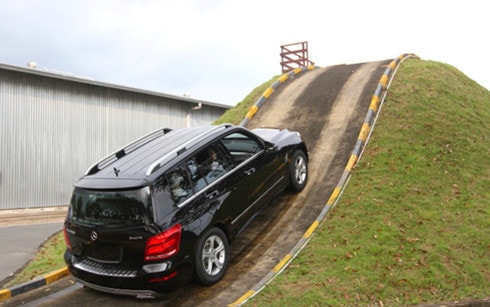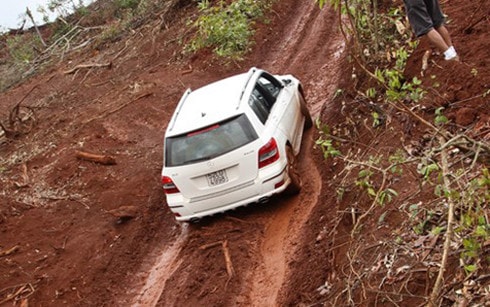Tips for safe uphill and downhill driving for new drivers
For new drivers, going up and down hills is one of the difficult skills and very easy to cause accidents.
In driving techniques, going up and down slopes always makes many new drivers confused, especially when the two sides of the road are high mountains or deep ravines.
 |
| For new drivers, going up and down hills is one of the most difficult skills. |
Driving training experts advise new drivers to pay attention to the following points:
1. Before going uphill or downhill (especially on steep or long slopes), it is necessary to check the clutch, front brake, rear brake, gear, throttle, and tires; if any part is found to be out of adjustment, it must be handled immediately.
2. Use the same gear when going uphill as you use downhill. Never use neutral (0) when going downhill because it is easy to slip, makes the road less precise, and is less effective when braking suddenly.
3. When going uphill, you must use the gear that is appropriate to the technical features of each type of vehicle and the weight of the cargo on the vehicle. Pay attention to the "quick, sensitive" technical operation when needing to reduce gear to continue climbing the slope, avoid getting stuck in gear, or having the gear stop at neutral (0) causing the vehicle to fall behind, especially in the case of a heavily loaded vehicle.
4. When going down a long slope, the car will go faster. If you encounter a sudden problem that requires emergency braking, you must use the rear brake, front brake, reduce gear, reduce throttle and release the clutch.
5. When driving down a winding slope (a “sleeve” curve): always stick to the right side of the road, do not drive fast to limit the centrifugal force pushing the vehicle out and causing it to flip or not brake in time, leading to the accident of the vehicle going down the cliff.
6. When going down the ferry slope (especially a steep slope): When you reach and the wheels touch the ramp, stop the vehicle for a moment to reduce gear before continuing onto the ferry.
The method of using the clutch while standing on a slope is only applicable when stopping the vehicle on a slope for a short time, not when having to park or stop for a long time. Accordingly, the driver will combine the clutch release moderately and at the same time apply the throttle (if necessary) just enough to give the vehicle enough traction to not roll but also not move forward.
But this method, if applied for a long time, continuously, can cause the clutch to wear out quickly because the friction generates a lot of heat. In return, the clutch is really useful when having to move little by little on a slope, the stopping time is not long enough to pull the handbrake.
In today's market, users can choose automatic transmission vehicles, making it extremely easy to start uphill. There are even vehicles that support hill start technology, making the concept of starting uphill sometimes forgotten.
However, for manual transmission cars, this is not a simple task. If not handled properly, the car will drift, affecting the vehicles behind, and even causing accidents.
 |
| If you go up and down the slopes carelessly, the car will slide, leading to dangerous situations. |
Currently, there are 2 basic experiences on how to start uphill that new drivers should remember to operate the vehicle more effectively:
The safest and most effective way for drivers is after the car has stopped on the slope, you pull the handbrake with the purpose of replacing the footbrake to keep the car at the stop. At that time, you can take your foot off the brake and put it on the accelerator. At the same time, slowly release the clutch with your left foot, until you feel the steering wheel or gear lever vibrate (indicating that the clutch plates have engaged), then gently release the handbrake, listen to see if the car does not slide, then release the handbrake, the car will crawl up by itself. You can gently apply the accelerator if the car has not moved.
A more adventurous way, for experienced drivers, is to not use the handbrake. After the car stops, slowly release the clutch, until you feel the steering wheel or gear lever vibrate, then gently release the foot brake and listen.
If you feel the car drifting, step on the brake and try again. If the car doesn't slide, release the foot brake completely and the car will crawl up. If you release the foot brake completely and the car still stops, step on the accelerator a little bit and release the clutch a little more. Once the car is moving, keep the clutch and accelerator in place until the car passes the top of the hill./.
According to VOV
| RELATED NEWS |
|---|


